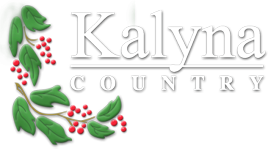 The Cree in Kalyna Country
The Cree in Kalyna Country
Kalyna Country is situated on territory that from the mid-18th century was primarily the domain of the Plains and Woodland Cree. The name most Canadians know them by is derived from an Ojibway term that the French originally recorded as Kiristineaux, later shortened to Cris, and which in English became rendered as Cree. Forming one of the largest tribes in Canada, the Cree inhabit lands extending from northern Quebec to Alberta, and are linguistically members of the Algonkian family of First Nations.
The Woodland Cree were among the first tribes to come into contact with British traders on Hudson’s Bay in the 1600s, when their hunting grounds probably extended no further west than the Saskatchewan-Alberta border. Quickly adapting to the needs of the newcomers from Europe, the Cree were soon supplying a growing network of outposts with furs as well as fresh meat in exchange for trade goods that included knives, guns, and utensils. However, after they had exhausted their customary sources of game, the Cree started to push westward along the North Saskatchewan River into central Alberta, where they inevitably came into conflict with the Beaver, Blackfoot and other aboriginal tribes. Eventually, the Cree drove the Beaver, an Athapaskan-speaking people, into the upper reaches of the Peace River, while continuing to struggle with the Blackfoot for control over the lands between the Battle and North Saskatchewan Rivers. In this process, the southernmost Crees developed a lifestyle appropriate to the environment of the plains, while those living in the boreal forest retained more traditional Woodland ways. Because the Kalyna Country region straddles both Parkland and Prairie terrain, the Cree who roamed east central Alberta developed a mixed culture that blended hunting, fishing and trapping in the bush, with the pursuit of buffalo that was characteristic of the Indians who lived in the open plains.
In time the Cree developed a close relationship with the fur traders, sometimes serving as middlemen in the conduct of business. The Cree readily adopted elements of European dress and other cultural influences from their British and French counterparts, who likewise absorbed much from Native life and often took Cree women as their wives. In this way, the fur trade gave birth to the Metis Nation — a people of mixed blood who drew strength and knowledge from both sides of their rich ancestries.
After the buffalo herds disappeared, and the fur trade died out, a band of Cree eventually settled in the area between present-day St. Paul and Smoky Lake counties. Their proud descendants can still be found at Whitefish Lake and Saddle Lake First Nations Reserves, where they have continued to evolve in step with modern times while retaining many traditional values passed down through their elders.
Welcome to Nipinahtikwaski…
At least, that is how you say “land of the highbush cranberry” if you happen to be speaking in Cree, one of Canada’s most widely-known Native tongues, used all the way from Quebec to Alberta.
The Kalyna Country Ecomuseum is home to the Saddle Lake Band of the Cree people, who reside on two reserves between St. Paul and Smoky Lake Counties: Saddle Lake Indian Reserve #125, and Whitefish Lake Reserve #128.
The Cree first moved into east central Alberta in the 1700s, when the fur trade was introduced to the western prairies along the North Saskatchewan River. Having long done business with the European trading companies in Central Canada and Manitoba, the Cree were well-suited to spearheading the harvest of pelts that were delivered to the posts established by the North West and Hudson’s Bay Companies between 1792 and 1864.
East central Alberta is extremely rich in Native history not only from the time of the Cree migration, but extending back through thousands of years of Aboriginal habitation. A few traces of this legacy live on in such Kalyna Country place names as Waskatenau, Wahstao, Amisk Creek, and Akasu Hill.
But the Cree residents of Goodfish and Saddle Lakes also have their own way of saying the names of well-known Kalyna Country communities. Can you guess which are the following: 1) puskwa-isipi; 2) apuskwa-witik; 3) kipoohapah; and 4) askapatew-sahigan? The answers are 1) Vegreville, described as “birch creek”; 2) Vilna, rendered as “prairie”; 3) Elk Point, or “thick willow bush”; and 4) Smoky Lake, known as “smoking lake” in Cree, apparently because it was a place where medicine men would periodically meet to share a ritual pipe along with their insights into healing.
